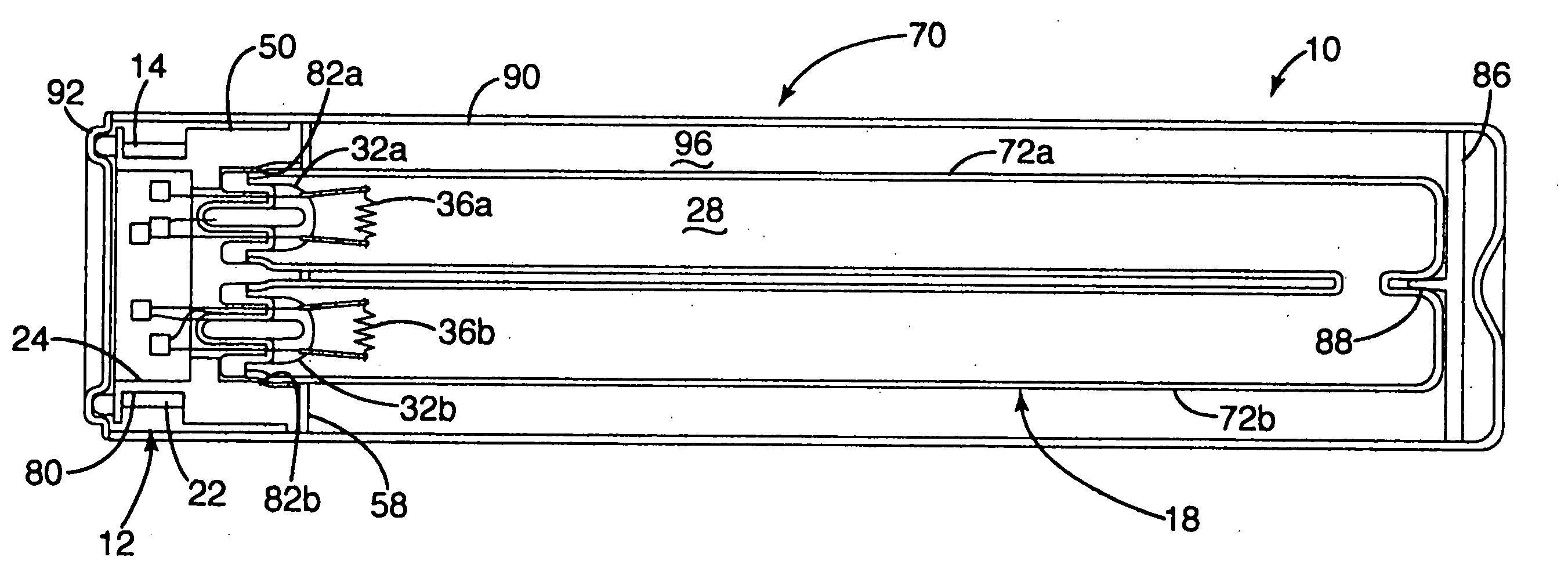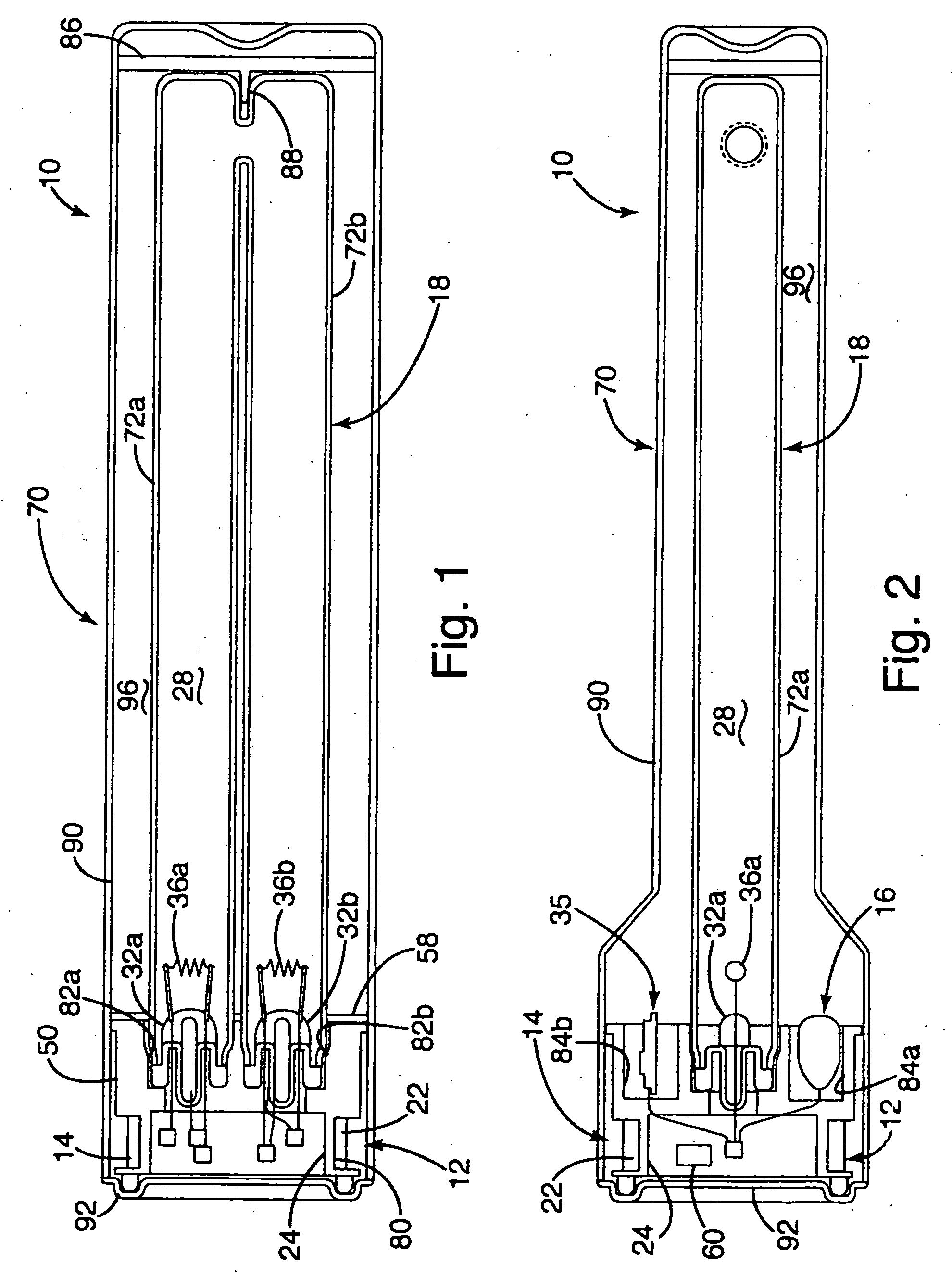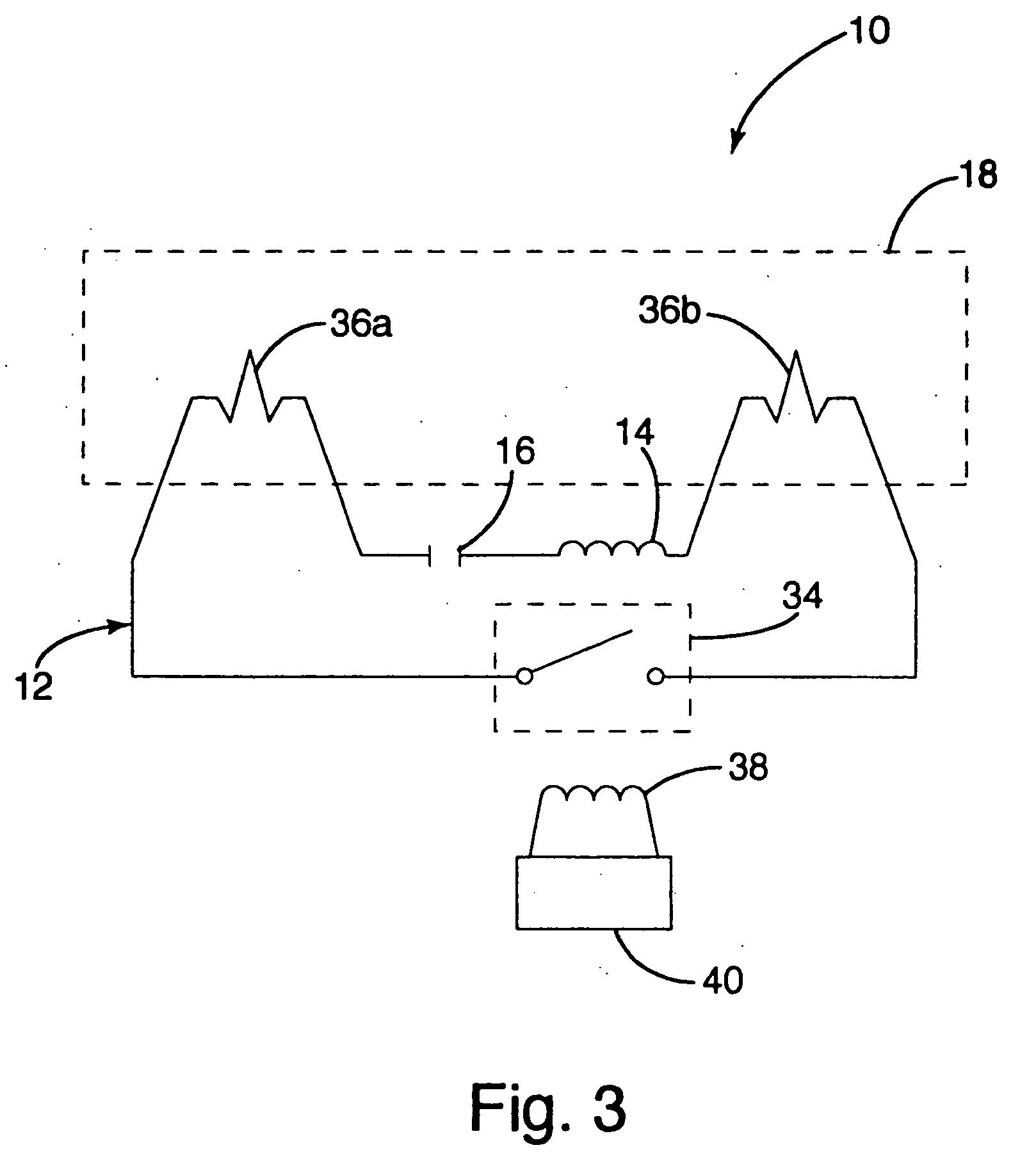Method of manufacturing a lamp assembly
a manufacturing method and technology for lamps, applied in the field of lighting, can solve the problems of spectral emission loss, and achieve the effects of high power factor, simple and inexpensive, and high efficiency
- Summary
- Abstract
- Description
- Claims
- Application Information
AI Technical Summary
Benefits of technology
Problems solved by technology
Method used
Image
Examples
Embodiment Construction
[0033] A lamp assembly according to an embodiment of the present invention is shown in FIGS. 1 and 2, and is generally designated 10. For purposes of disclosure, the present invention is first described in connection with a conventional type PL-S 11 watt UV lamp converted for use at 38 watt, such as the type used in a water treatment device. The lamp assembly 10 generally includes a lamp circuit 12 and an outer sleeve 70. The lamp circuit 12 includes a secondary 14, a capacitor 16 and a lamp 18, all connected in series (See FIG. 3). The secondary 14 inductively receives power from the primary (not shown) of an associated ballast (not shown). The series capacitor 16 is specially tuned, as described in more detail below, so that the lamp circuit operates at resonance under specific operating conditions. The entire lamp circuit 12 is fully enclosed within the outer sleeve 70, including the secondary 14, capacitor 16 and lamp 18. At least a portion of the outer sleeve 70 is transparent ...
PUM
 Login to View More
Login to View More Abstract
Description
Claims
Application Information
 Login to View More
Login to View More - R&D
- Intellectual Property
- Life Sciences
- Materials
- Tech Scout
- Unparalleled Data Quality
- Higher Quality Content
- 60% Fewer Hallucinations
Browse by: Latest US Patents, China's latest patents, Technical Efficacy Thesaurus, Application Domain, Technology Topic, Popular Technical Reports.
© 2025 PatSnap. All rights reserved.Legal|Privacy policy|Modern Slavery Act Transparency Statement|Sitemap|About US| Contact US: help@patsnap.com



